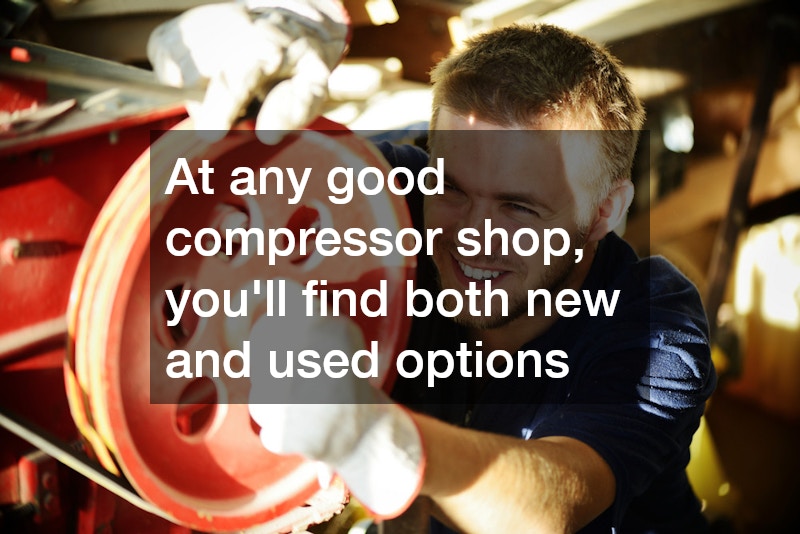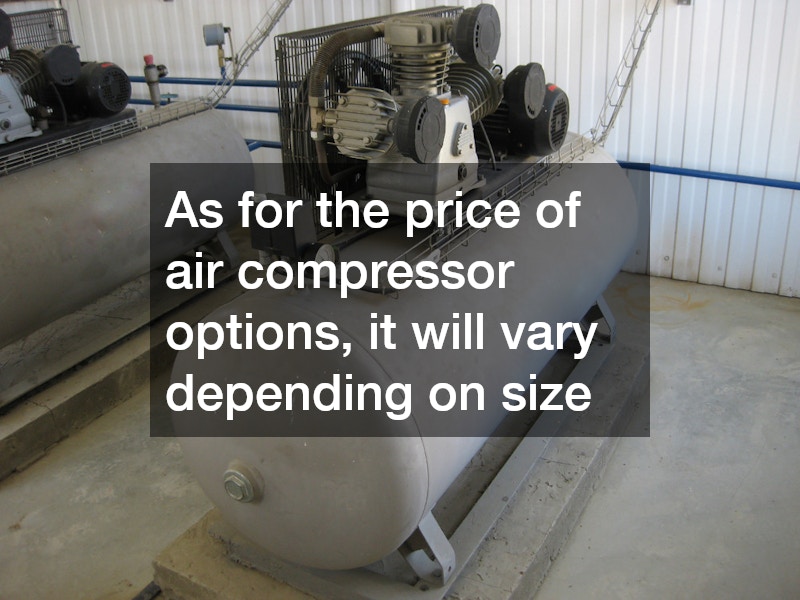
When you’re in the market for an air compressor, it’s important to know exactly what you need for your specific tasks. With so many air compressor types available, understanding the differences can save you time and money. Whether you’re looking for a portable option for home projects or something more powerful for industrial use, there’s a wide range to choose from.

At any good compressor shop, you’ll find both new and used options, giving you flexibility based on your budget and needs. If you’re considering new air compressors, you’ll benefit from updated technology, better energy efficiency, and warranties that offer peace of mind. It’s always worth asking about the features that come with the latest models.

As for the price of air compressor options, it will vary depending on size, capacity, and whether it’s a brand-new unit. High-end models for professional or commercial use naturally come at a higher cost, while smaller, home-use compressors are typically more affordable. Before making your decision, be sure to compare the different air compressor types and their specific uses. This way, you can choose the right model that will serve you well in the long run without overspending. Read on to learn more about professional air compressors.

Do you own a manufacturing facility? If you do, it?s likely that you have so many different tools, pieces of equipments, and systems used on a regular basis. For each of these things, you have to keep them properly maintained, serviced, and repaired so that they work correctly and don?t disrupt your workflow. If your systems, tools, and pieces of equipment aren?t functioning as well as they should, this can end up costing you more money and time than necessary. One item your manufacturing facility likely uses is a compressed air system. These can be tricky to keep well-maintained at times.
Interested in learning more about compressed air system design and the different parts that go into a compressed air system like air compressor tubes, compressor piping, and cushion clamps? Keep reading for more information about how to make sure your air compressor system is working the right way.
Basic Information About Air Compressor Systems
Manufacturers are one of the industries that typically rely on air compressor systems. Nearly 70% of all manufacturers have an air compressor system in their buildings. Nowadays, it?s not enough to have just any air compressor system. You want to have one installed in your building that will get the job done in the most efficient way possible. If your air compressor system is old, outdated, or not well-maintained, it may be costing you extra money. There?s no reason to waste money on an air compressor system that can?t do the job right. By replacing your air compressor system or certain parts like the air compressor tubes, you may be able to get a better functioning product.
For example, you can get an air compressor system that focuses on energy conservation. Right now, around 50% of small to medium sized factories and manufacturers that have air compressor systems installed products that were low-cost and focused on energy conservation efforts. This statistics were pulled from an energy audit done by the U.S. Department of Energy.
How to Know if Your Air Compressor System Could Be Improved or Replaced
There are a variety of ways to know if something is wrong with your air compressor system. If you think something is wrong, don?t sit and wait for it to break entirely. You want to handle the issue or problem as soon as it arises. That way, it doesn?t cost you as much money as it might otherwise. If you replace or repair the broken part, whether it?s the air compressor tubes or the air compressor pipes, you can likely get back up and running in less time than if you had to replace the entire air compressor system.
One key indicator that something is wrong is if there is a leak. If there is a leak in your air compression system, you?ll notice it because it will affect productivity and costs. With a 100 psi system, if you have a hole that?s as small as one-eighth an inch in diameter, it can set you back $1,200 in a year due to wasted energy. That just goes to show that no leak is too small to maintain and repair immediately.
Another way to check if something is wrong with your air compression system is to observe the pressure loss. Experts state that 10% pressure loss isn?t something to be concerned about. When a system is properly designed, 10% pressure loss or less can be expected. However, if pressure loss increases to 10% or more, you need to inspect your system to see if something is wrong. You can start by evaluating your distribution system and decide if you think there is a specific area that is causing the drops in pressure. If you don?t address and resolve this issue, you can expect to lose money in operating costs. Statistics indicate that for every two pounds-per-square-inch of decrease in pressure, you can see a 1.5% reduction in operating costs.
Have you needed to repair or maintain your air compressor system at your company? What was wrong with the system? Let us know about your experiences finding new parts for your system like air compressor tubes.
